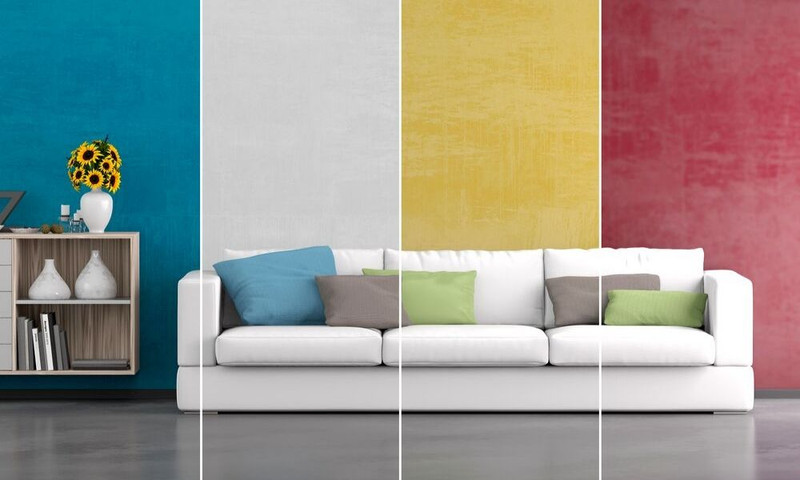Paint colors aren’t solely meant to create the perfect aesthetic; or at least, not only visually. Designers have long acknowledged that color has a notable effect on our mood. The paint on your walls can influence how you feel when you spend time in your own home. But what, exactly, are these effects? In this article, we dig a little deeper.
White: The lightest of all colors, white is a popular option for making a room feel larger. Many modern homes painted white feel pure and serene. When kept clean, white can make your space feel vast and orderly. However, white is somewhat difficult to keep pristine, and there are ways in which it may cause you anxiety. This is because the color is sterile—it’s oftentimes in the color palette for dentist offices and hospitals. Anyone that has negative emotions related to these areas may want to steer clear of this option.
Blue: There are various shades of blue, and each may suggest a different emotion. Overall, however, people tend to have a positive association with the color. Something about the color blue suggests stability, and a muted, lighter hue tends to create a calming effect. The correct shade of blue can also make a room feel fun without being overbearing in the sense that pink or green can be.
Red: While the correct shade of red can feel ornate, many decorators will opt against this particular color. It’s known to evoke the feeling of discomfort or irritation in some, which is why many homeowners use red as an accent color. Red is also said to increase one’s appetite, which is why many restaurants will use this color in their décor.
Yellow: Yellow is an uplifting and inviting color, inspiring energy and lifting one’s mood. The color emulates that of the sun and makes a room appear larger. Since the color is so bright, it can inspire productivity, which is why it’s a great option for your kitchen or office.
Size
One of the first things that people tend to associate a color with is depth. When you look at an oil painting, you’ll see that the whites are what draw the subject forward, while the dark hues pull it back. Painters can create a three-dimensional effect—ultimately, we’re looking at an illusion. When you look at a portrait, you aren’t actually looking at a face, but at a deception created through the clever use of color. Likewise, the color of your home’s walls is also an illusion. They don’t physically change a room’s dimensions, but it can make it seem as such. A room painted white or bright yellow can appear to be larger than it is. When paired with the appropriate furniture, your space seems as though it’s larger than it actually is. The opposite effect happens with dark colors, which draw the walls in and make you feel claustrophobic. Your emotions are already deceived by the size color can portray, but the illusion doesn’t end there.Color and Emotion
Different colors can also evoke different emotions. This is perhaps the reason people spend so much time pouring over paint swatches, deciding between a dozen shades. This seemingly trivial struggle is perhaps less unimportant than some of us may believe—after all, how you feel in your own home is everything. Below is a brief overview of popular paint colors and their perceived emotional impacts.White: The lightest of all colors, white is a popular option for making a room feel larger. Many modern homes painted white feel pure and serene. When kept clean, white can make your space feel vast and orderly. However, white is somewhat difficult to keep pristine, and there are ways in which it may cause you anxiety. This is because the color is sterile—it’s oftentimes in the color palette for dentist offices and hospitals. Anyone that has negative emotions related to these areas may want to steer clear of this option.
Blue: There are various shades of blue, and each may suggest a different emotion. Overall, however, people tend to have a positive association with the color. Something about the color blue suggests stability, and a muted, lighter hue tends to create a calming effect. The correct shade of blue can also make a room feel fun without being overbearing in the sense that pink or green can be.
Red: While the correct shade of red can feel ornate, many decorators will opt against this particular color. It’s known to evoke the feeling of discomfort or irritation in some, which is why many homeowners use red as an accent color. Red is also said to increase one’s appetite, which is why many restaurants will use this color in their décor.
Yellow: Yellow is an uplifting and inviting color, inspiring energy and lifting one’s mood. The color emulates that of the sun and makes a room appear larger. Since the color is so bright, it can inspire productivity, which is why it’s a great option for your kitchen or office.

